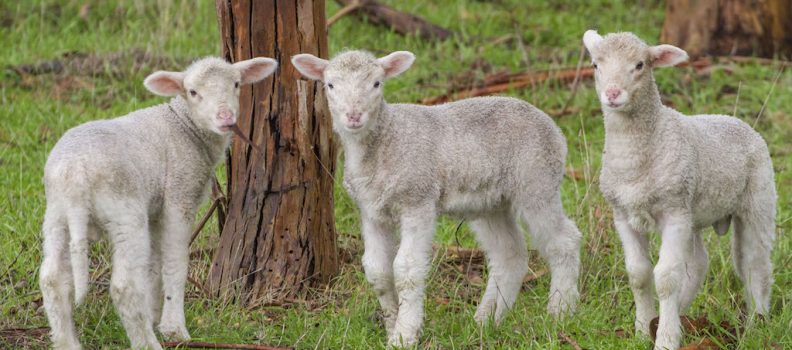When dust turns to puddles – Managing increased lamb worm burdens in the wet

It’s been an especially wet season for many of our clients. Increased pasture levels can be seen in most states across Australia.
As a producer, you’ll already know that increased moisture coincides with an increased risk of internal parasites in livestock. Eggs laid predominately by Haemonchus and Trichostrongylus (more commonly known as Black Scour Worm) have shown increased activity in egg counts across NSW, SA, WA and VIC. Pasture contamination levels have started to become significant.
With pasture almost exceeding demand on some properties, the concentration of worm eggs in paddocks is diluted. However, despite this, Faecal Egg Counts (FECs) conducted in August indicate significant worm burdens in lambs pre-weaning. According to the Paraboss updates (www.paraboss.com.au), pre-lambing drenches have been reasonably effective and have helped to protect lactating ewes from the parasites.
An adult scour worm can lay up to 200 eggs per day in her three-month lifespan, so the potential for the worm burdens to build up rapidly is a serious issue. Many producers consider the weaning drench to be the most important drench in a sheep’s life, so it’s a good time to start undertaking Faecal Egg Counts to see exactly where your property stands in regards to worm burdens.
Do you need to drench?
Rather than just assuming you need to drench your stock, it’s important to clarify whether drenching would be of value to you at this time. To help reduce the risk of drench resistance on your property, it’s best to know when and if you need to drench, instead of just assuming you need to do it. It will not only help with resistance issues but also help to reduce extensive treatment costs. If you are unsure about whether to drench or not, conduct an FEC or WEC test to help justify whether or not your livestock need drenching.
Also, it is important to keep an eye on what drenches you have been using over the years; whether or not there has been a build-up in resistance in the flock or herd. If you are unsure whether this has occurred or not a simple drench resistance test can be conducted to help you select your next move.
Prevent poor growth rates
Worms can have a significant effect on weight gain in lambs if left untreated. A subclinical worm burden (no dramatic scours, signs of weakness or death) could reduce growth rates by 30%. To make sure you don’t experience this significant decrease in value, it’s a good idea to monitor both ewes and lambs for signs of worm burden. FEC monitoring is essential to ensure your stock are reaching their potential weight gains this spring.
It’s recommended to monitor weaners every 3 weeks and adult stock every 4-5 weeks until pastures hay off. It will help you to ensure worms don’t have the opportunity to reduce the total amount of meat that will be produced on your property this spring.
Now is the time
Early dropped lambs are coming up to weaning. This is a perfect time to conduct FECs and drench if required. It’s also a great opportunity to add some trace elements to your stock’s diet and boost their feed conversion efficiency by dosing with Beachport Liquid Minerals Black Cap via the water trough or onto feed.
Please note: Beachport Liquid Minerals cannot be orally dosed due to APVMA compliance regulations.
Written by Jacqui Mathys
